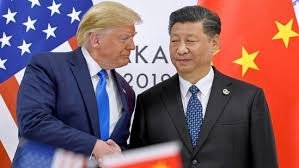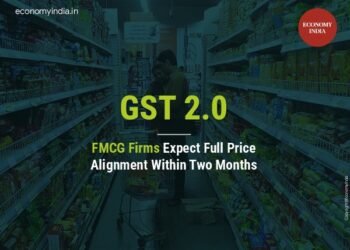Ease of Doing Business for MSMEs: Indian SMEs account for 80 per cent of the country’s enterprises, creating over 8,000 different value-added products, and productivity in the sector attracts a lot of FDIs.
Due to the decreased business, nationwide shutdowns, and closing of the limited marketplaces during the pandemic, 43 per cent of SMEs accepted the digital solution.
Ease of Doing Business for MSMEs: India has the second-largest base of MSMEs, just after China. The MSME sector is a key driver for the Indian economy and possesses the potential to spread industrialization throughout the country. The sector contributes nearly 40 per cent of the country’s total exports and 45 per cent of total manufacturing and employs a staggering 40 per cent of the workforce. And these past two decades have been quite fruitful for the sector. According to government data, 11.10 crore jobs have been estimated to be created by the MSME sector alone.
Nation Economy
Luckily, the nation’s economy is also aiming to be a $5 trillion economy by FY25 and there have been overwhelming efforts from both the industry and the government in responding to this opportunity. This coincidence of wants puts the MSME sector in the drivers’ seat to the country’s economic development. This sector was predicted to contribute nearly a quarter of the GDP by 2020, but the pandemic slowed it down. Currently, the MSME sector contributes 17 per cent to the country’s GDP, however, this sector can provide the necessary thrust required by the nation’s economy to achieve its goals.
MSME Sector
Now let’s have a look as to why this sector is prophesied to boost the economy in the coming three financial years. Firstly, the micro-level outcomes of this sector are commendable. With 6.3 crore MSMEs functional in the country, this sector generates employment for the country’s workforce. And with employment comes a reduction in poverty, increased literacy, and workforce migration towards improving the standard of living. Along with these, the continuous growth of the MSME sector in the country has led to rapid regional development, increased exports, and improved quality of life for those employed in the sector. All these micro-level outcomes have a huge direct or indirect impact on the economy and its GDP.
Next comes the sector’s role as the ‘Engine of growth’. Indian SMEs account for 80 per cent of the country’s enterprises, creating over 8,000 different value-added products, and productivity in the sector attracts a lot of FDIs. Also, there is an increase in the overall exports of the country. According to many market studies, this sector’s holistic development will be crucial in placing India at the centre for global manufacturing and operations. These factors also point towards the importance of the SME sector in the economic goals of the country.
Production Linked Incentives
Here, the government also plays a vital role in boosting the economy via the MSME sector. And the government has very well understood the requirements of the sector and is gradually providing and nurturing a hospitable environment for the sector to flourish. The government very recently allocated Rs 20,000 crore to be used for the development of MSMEs through MUDRA loans. There are currently numerous incentives, grants, and schemes from the government to encourage these engines to thrust. The Production Linked Incentives (PLI) for manufacturers, easy credit availability through schemes like Credit Guarantee Fund Scheme, Credit Linked Capital Subsidy Scheme, all show the government’s keen interest in the sector.
Growth in The Sector
Although there has been tremendous growth in the sector, and the government is willingly and promptly participating, there is a need for some essential adjustments in the already existing norms and guidelines. The importance of regulating the pricing of raw materials simply cannot be overlooked. Many MSMEs have agreements with PSUs for their raw material, but these agreements were signed a long time ago and the prices have changed, and there is a need to revise the cost according to the current market situation. The government and regulatory bodies are also unable to assure these enterprises of a market for their finished products.
Like every sector, there will be roadblocks for the growth of the MSME sector too, but these MSMEs have also found ways to swerve around them. Due to the decreased business, nationwide shutdowns, and closing of the limited marketplaces during the pandemic, 43 per cent of SMEs accepted the digital solution. It is estimated that around 3 crore SMEs used the internet to sell their products. The road ahead for this sector will be fairly smooth, whatever be the challenge, the people behind this industry will always minimize or neutralize the challenges, quite effectively.
(Economy India)












